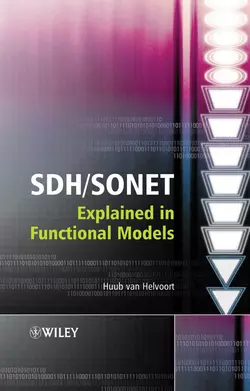SDH / SONET Explained in Functional Models

Тип: PDF книга
Жанр: Зарубежная образовательная литература
Язык: на английском языке
Издательство: John Wiley & Sons Limited
Дата публикации: 25.04.2024
Отзывы: Пока нет Добавить отзыв
О книге: H/SONET Explained in Functional Models represents a fresh approach to the modeling of transport network technologies. This practical guide and reference text uncovers the description of SDH (Synchronous Digital Hierarchy), SONET (Synchronous Optical Network) and OTN (Optical Transport Network) transport networks and equipment using functional/atomic modeling techniques. It clearly explains the use of models in the ITU-T and ETSI standards, the transport networks and the transport equipment in the definition, implementation and deployment phase. Pays particular attention to the SDH and OTN standards using functional/atomic modeling, as used and defined in the ITU-T (International Telecommunication Union) recommendations G.805 and G.809 and the ETSI (European Telecommunications Standards Institute) standards EN 300 417, as opposed to the formal language used in the ANSI (American National Standards Institute) standard T1.105. Topics of discussion range from functional modeling high level transport networks to the most detailed device functions, aided by a variety of figures and tables. Shows that functional modeling is not restricted to SDH/SONET but that is can be used to describe any transport network, connection-oriented and connectionless, e.g. Ethernet and MPLS networks. Written by a leading authority in the area, this is the first book dedicated to the novel approach of using functional modeling to describe SDH/SONET/OTN networks. This volume will appeal to manufacturers, engineers and all those involved in developing and deploying SDH, SONET, OTN, Ethernet, MPLS technology. It will be an invaluable resource for postgraduate students on network communications courses and advanced users using functional modeling.